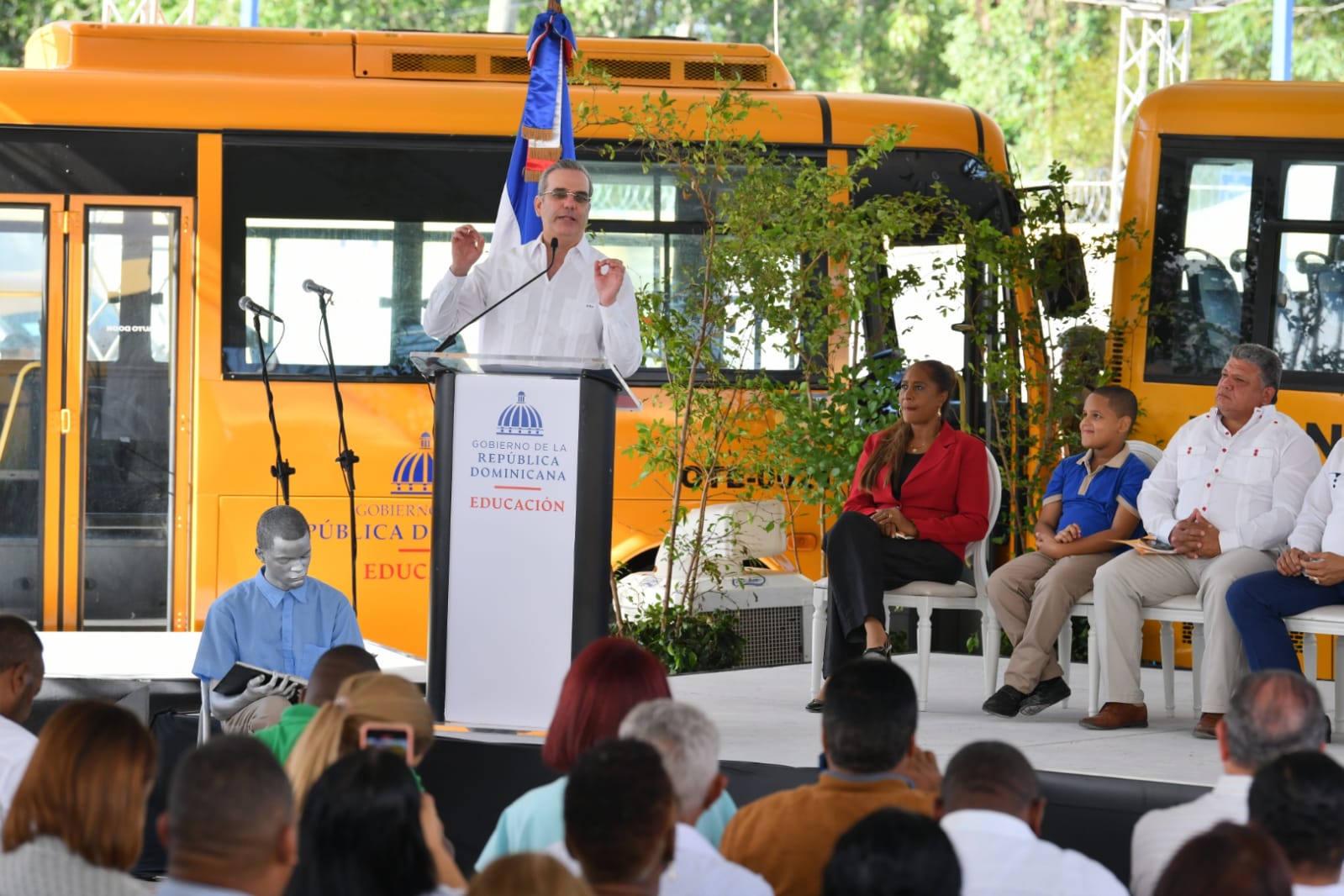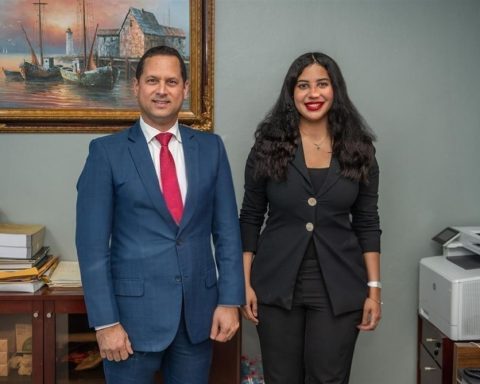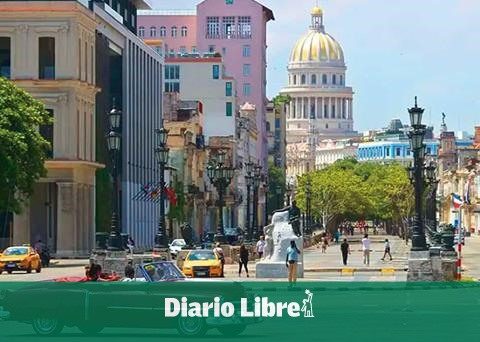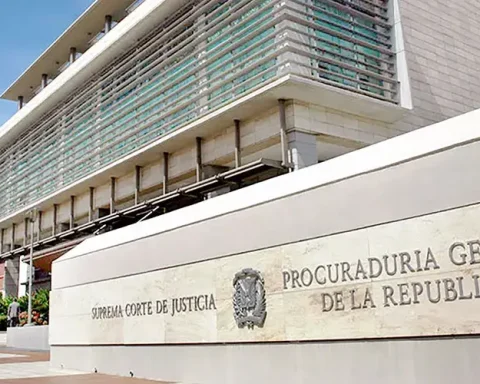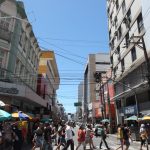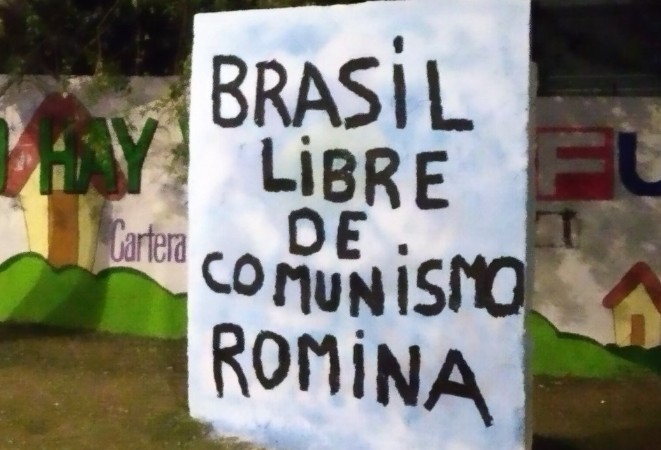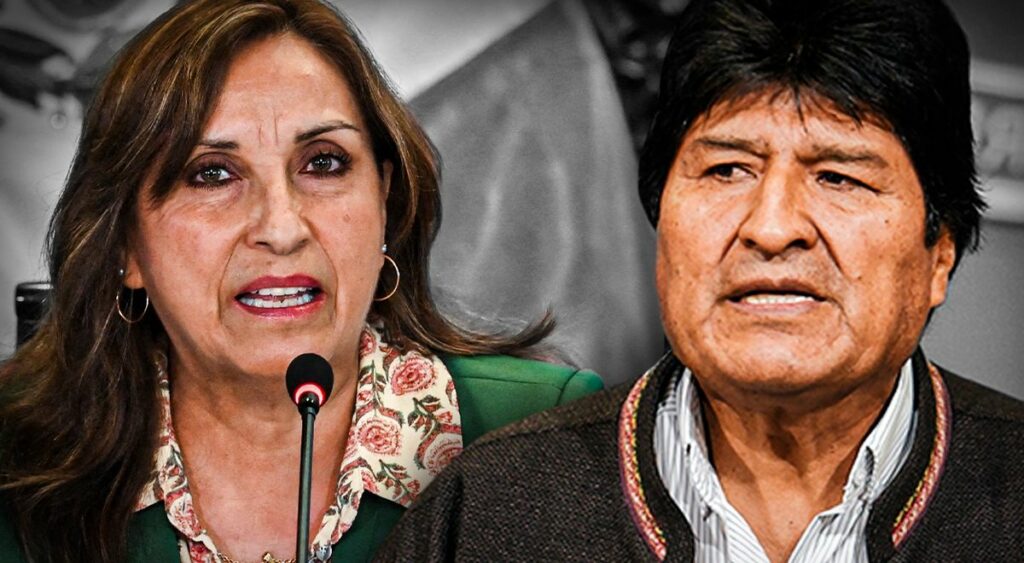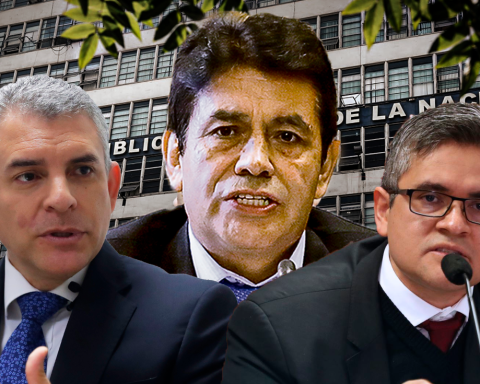The president of the Republic, Luis Abinader, launched this Tuesday the National School Mobility System, in a pilot plan that includes five demarcations of the country, with the integration of 50 buses that will transport students from the public sector for free.
The School Mobility Plan will serve a student population of more than 2 million students from the 18 regions of the Ministry of Education and its 122 school districts, as support to families that cannot continue assuming the risks and high costs of transporting their children to educational centers, which in turn will translate into savings in the family economy.
After starting the plan, the president assured that public policies that impact the entire country are a success because they impact people’s quality of life.
Joint effort
The implementation of the pilot program of the National School Mobility System was possible thanks to the joint effort of the Ministry of Education, the Ministry of Public Works, the Metropolitan Bus Office and the National Institute of Transit and Land Transportation, whose main incumbents are Ángel Hernández, Deligne Ascención, Radhaméz González and Hugo Beras, respectively, accompanied the president in the act carried out at the María Figueroa Adón elementary school, which was inaugurated.
The Government, through decree 616-22, declared the implementation of the National School Mobility System to be of high national interest, with the aim of guaranteeing the safety of the transport of boys and girls who travel to schools, avoiding traffic accidents that put the lives of students at risk.
School Mobility System
The School Mobility System, under the direction of the Ministry of Education, will expand throughout the country to benefit 2 million students, it began with the Implementation of a Pilot Plan that will positively impact life and safety when traveling to schools to more than 100,000 students from the Monte Plata province, from the educational districts of Yamasá, Monte Plata, Bayaguana, Sabana Grande de Boyá and Peralvillo, as well as from the communities of La Virgen-La Victoria-Hacienda Estrella, in Santo Domingo Norte ; the districts of Haina and Nigua, in San Cristóbal, and Las Calderas, in Baní, Peravia province.
The first School Corridor began in the community of La Virgen, crosses La Victoria until it reaches Haras Nacionales, covering the transportation of students from the Cosme Manuel Jiménez High School, María Figueroa Adon School, Hermana Sandra Reyes High School, Divina Providencia Hostel, Our Lady of the Nativity, Padre García School, Felicita Eleuterio School, Marcos Evangelista Adon Polytechnic, Juan Pablo II Polytechnic, Villa Primavera School, Primavera School, Los Castillo School, Alberto Monegro School, Hacienda Estrella School, El Rosario School, Manuel Enrique Peña High School , Cándido Class School and ends at the Carmen Celia Balaguer School, in Hacienda Estrella.
Simultaneously, the first 13 School Corridors began operating in Monte Plata with 18 buses, while in Haina 4 corridors were opened with an initial allocation of 4 buses.
In Nigua, 6 Corridors came into operation, which will be served by 5 Buses and a Bus was assigned to the Municipality of Las Calderas, in Baní, to transport its students to the Fe y Alegría, Ernestina Tejeda and Carlos Julio Tejeda High Schools, requested by the Neighborhood Council of the community.
Each student will have a Student Transport Bonus Smart Card, with their photograph, to use on the Metro and the Cable Car and corridors of the Metropolitan Bus Office (OMSA).
